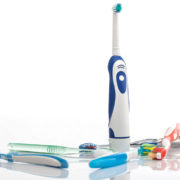What age should kids start seeing the dentist
It’s a question all parents have, when should you take your kids to the dentist for the first time? And the answer is something a lot of people get wrong. Most children don’t see the dentist for the first time until they’re about two and a half. In reality, they should be seeing one far earlier. How much earlier?
Children should see the dentist within six months of their first tooth erupting, or by age one.
You may be wondering why they need to see a dentist so early. Especially since they’re just going to lose the primary teeth anyway. However, proper dental health is crucial, even in young children. They need to learn how to eat, speak properly, and learn good dental hygiene. If they lose teeth too early due to decay or other factors, that can have a serious impact on their development. That’s why it’s so important that children have all of their teeth until they fall out naturally.
Dental visits can be scary.
If you take your child to the dentist around age one, they most likely won’t be very scared. And if they do get scared, regular dental checkups will make the dentist’s office seem like a regular occurrence. A child that’s over two years of age may be substantially more anxious if the dentist is a new thing. There are some things you can do to prepare your child for the dentist:
- Take them with you the next time you visit so they can see what it’s like
- Teach them about the importance of healthy teeth
- Play dentist with your kids – take turns examining each other’s teeth so they get used to the experience
Make sure you take them to a pediatric dentist. While some normal dentists treat children, pediatric offices are much more suited to children. They’ve been trained on how to deal with kids, and there are often toys and games to keep the children entertained.
Their future dental health can be greatly impacted by proactive dental checkups.
Pediatric dental visits, in addition to caring for your child’s current teeth, will make sure your child’s permanent teeth are developing correctly. Their permanent teeth are visible on x-rays, and their dentist will make sure that all of their teeth are forming correctly, and in the right place. And if there’s going to be a problem, the dentist can take steps to prevent it. For example, stubborn primary teeth may need to be extracted to ensure that the underlying permanent teeth come in the right way.
Pediatric dental health is very important, so make sure you take your kids to the dentist when they’re supposed to go. If you are afraid of or dislike the dentist, try to keep that to yourself so you don’t frighten your kids. Oral health is very important, and linked with heart disease, so make sure they take proper care of their teeth! If you’re having trouble finding a pediatric dentist, call our office and we can recommend a good one.










